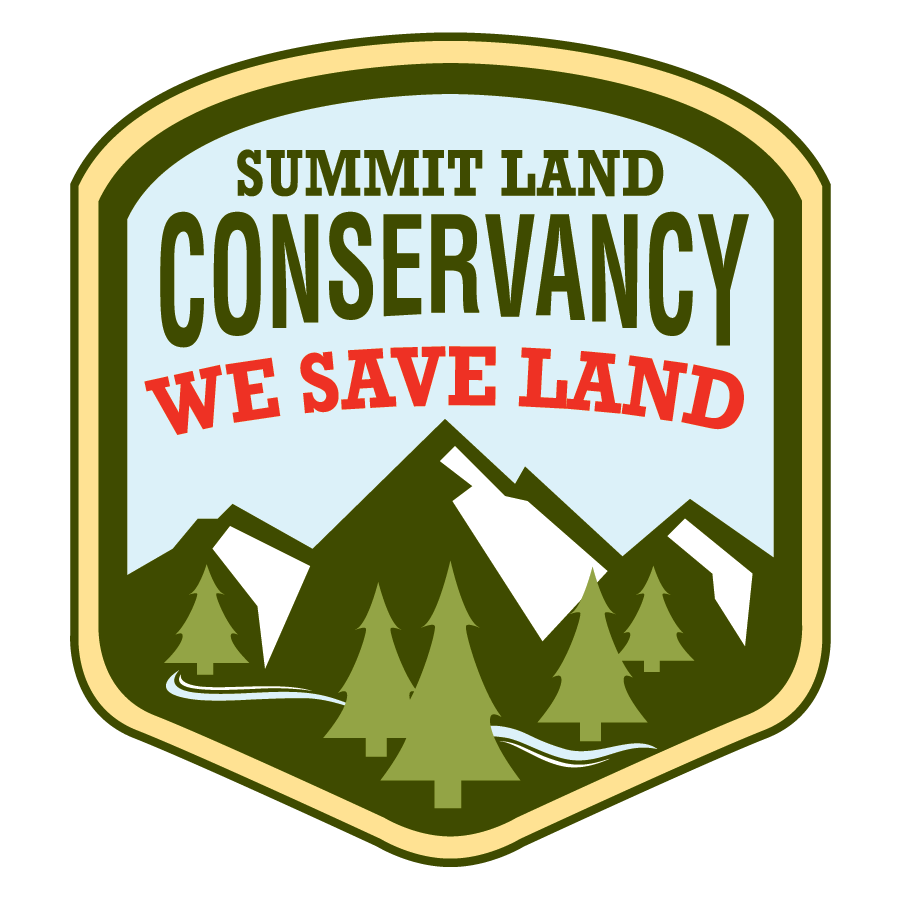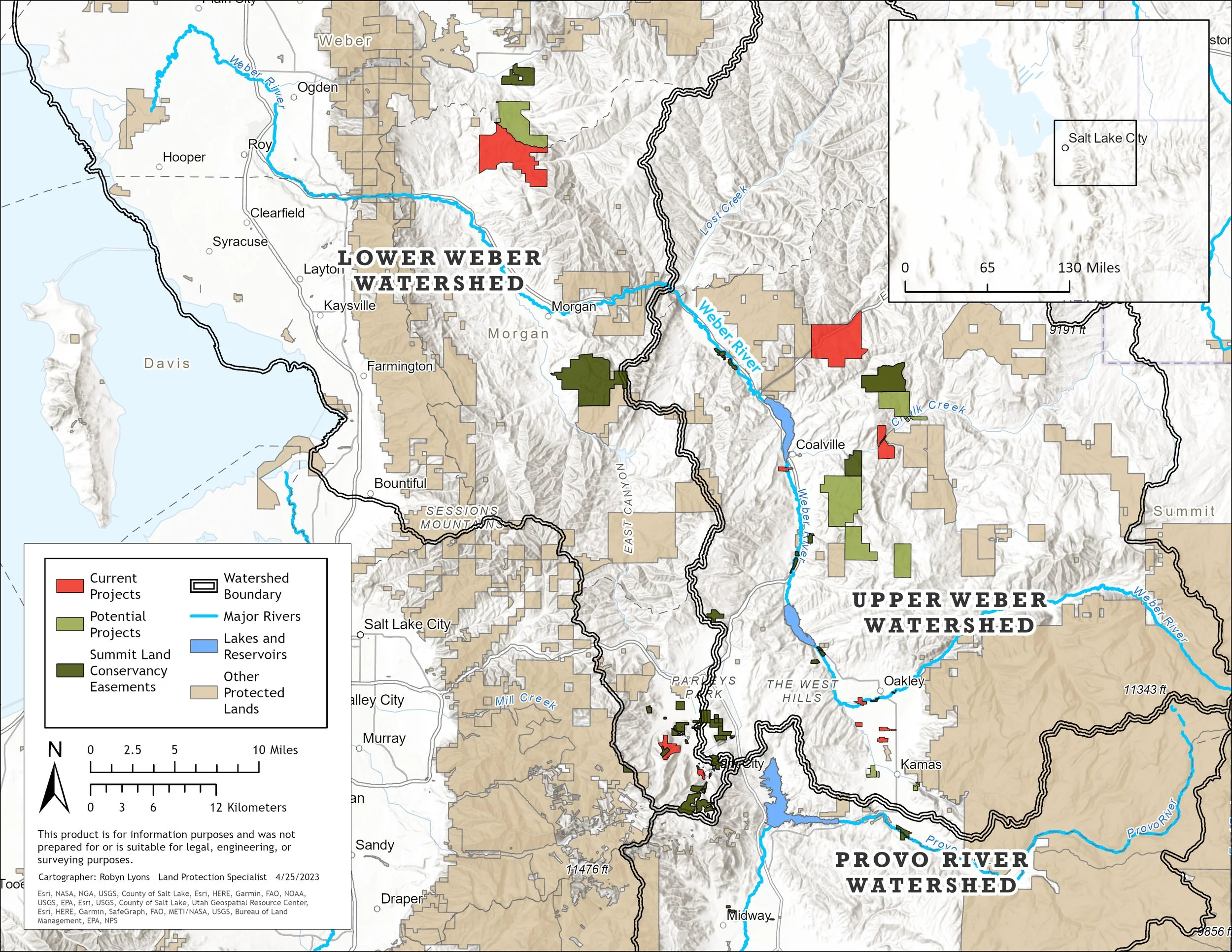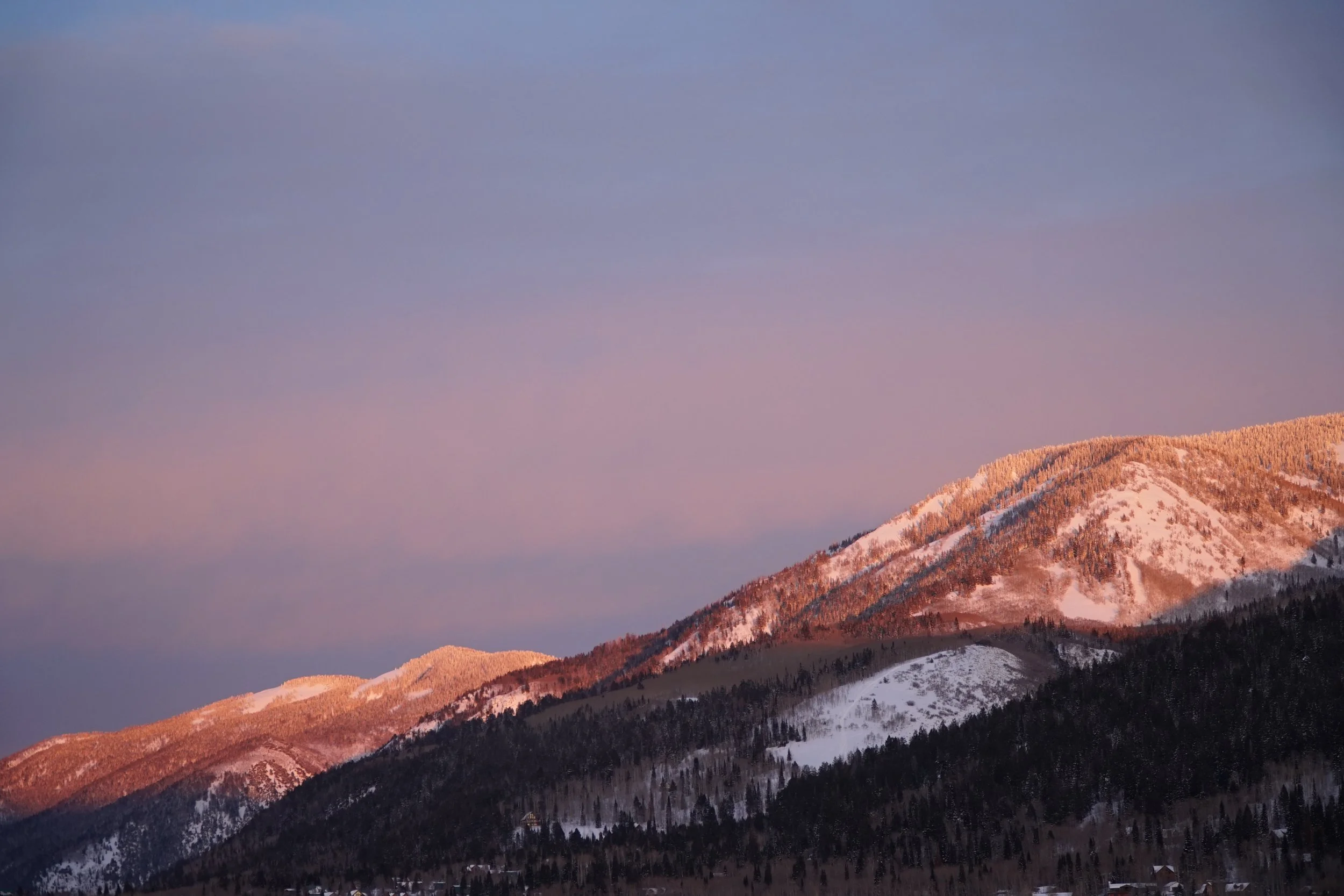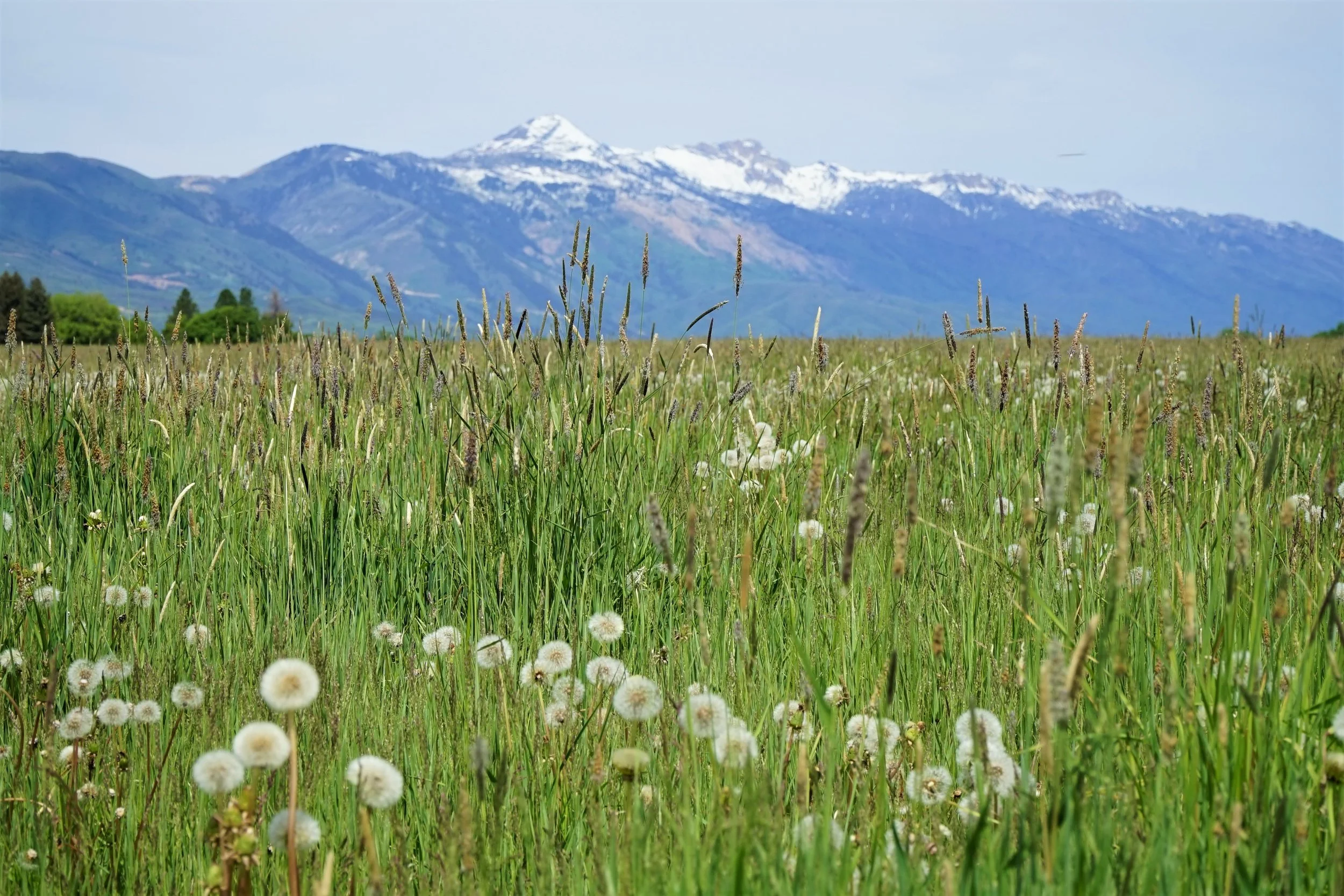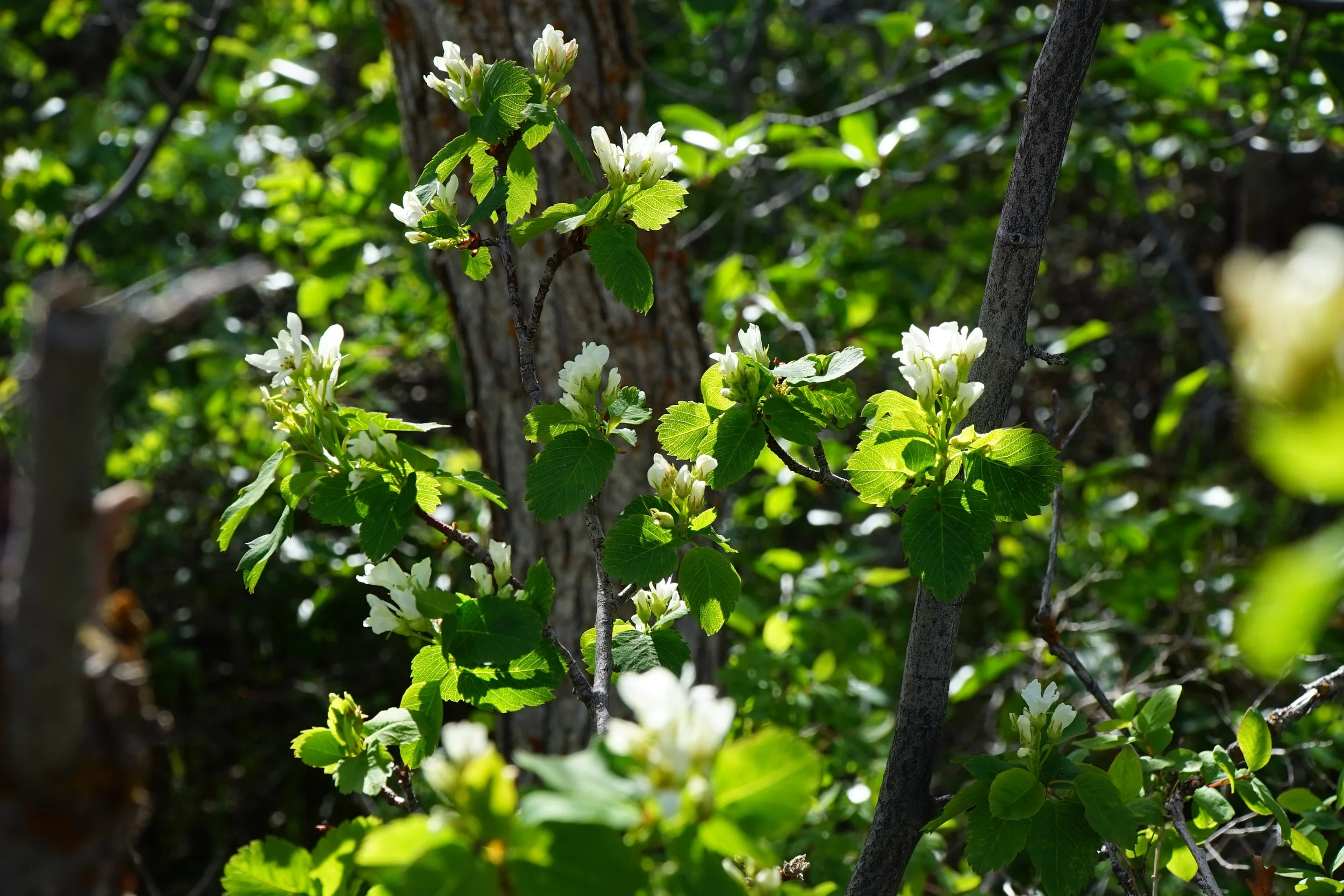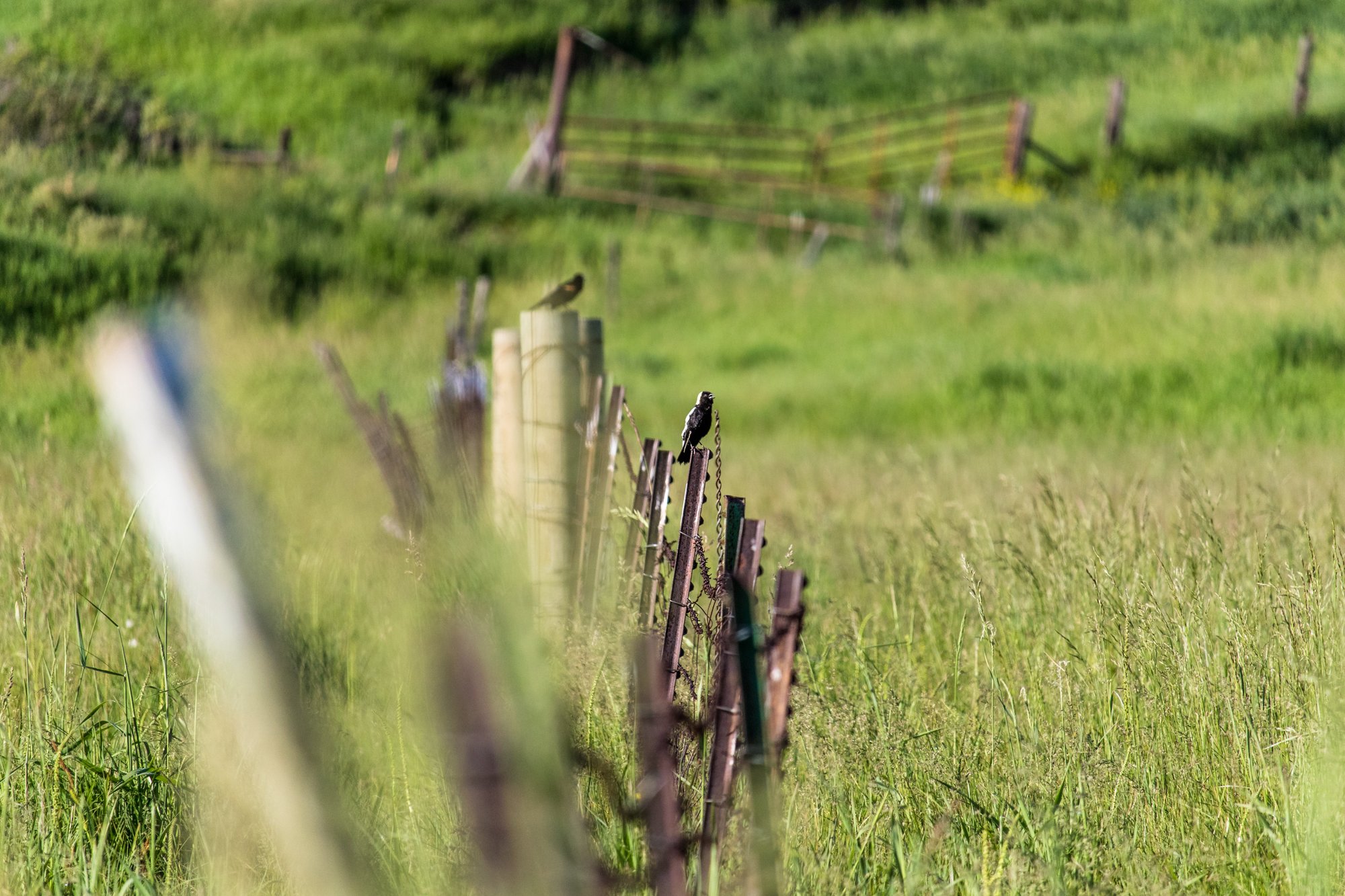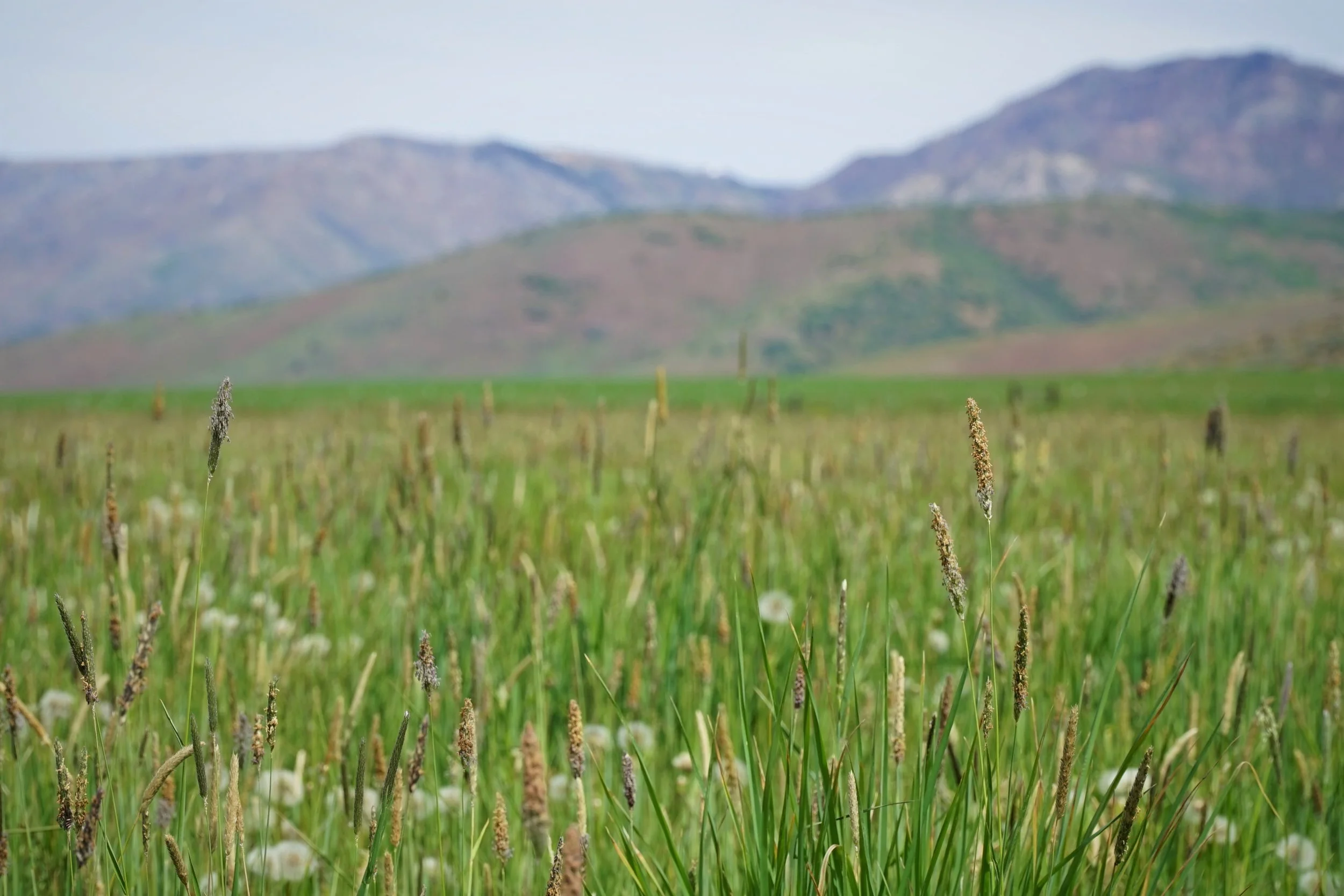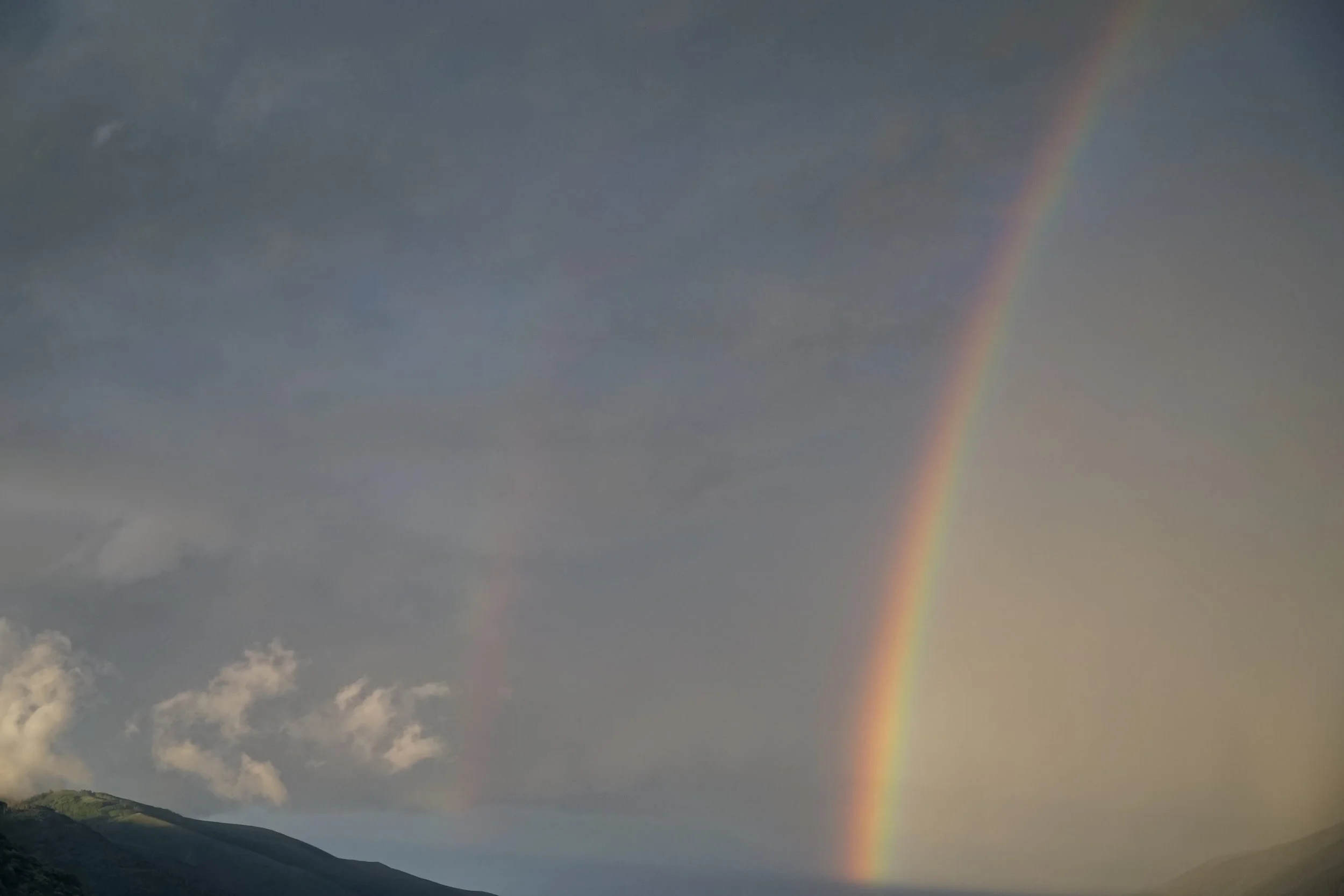For the Future
A 501(c)3 nonprofit, established in 2002, the Summit Land Conservancy is dedicated to saving the open spaces of the Wasatch Back. From Weber County to Wasatch County, we protect and monitor Utah’s landscapes and watersheds by defending 53 permanent conservation easements and two preserves on over 15,420 acres of land.
For over 20 years, the Summit Land Conservancy has saved unspoiled views, blue-ribbon fisheries, world-class trails, clean drinking water, local agriculture, and wildlife habitat that is important to our communities. And we’re here to stay. Because when we save land, we make a commitment to steward and defend these beautiful places in perpetuity.
The Utah Headwaters Initiative:
Summit Land Conservancy's Utah Headwaters Initiative focuses on enhancing the agricultural and environmental resources within the headwaters of the Weber, Provo, and Bear River Watersheds, all of which contribute to and feed the Great Salt Lake.
Summit Land Conservancy will continue to preserve lands through conservation easements, while working with landowners to adopt stream restoration practices and upland land management activities that help conserve water.
The Utah Headwaters Initiative works both below and above the banks of our rivers to improve aquatic habitat, protect and enhance adjacent agricultural lands, and document the carbon sequestration occurring on those lands.
THE UTAH HEADWATERS INITIATIVE WILL TRIPLE THE ACRES WE PROTECT OVER THE NEXT FIVE YEARS.
The Great Salt Lake is facing unprecedented danger. Without a dramatic increase in water flow to the lake in 2023 and 2024, its disappearance could cause immense damage to Utah’s public health, environment, and economy. The Great Salt Lake is a keystone ecosystem in the Western Hemisphere, and its wetlands provide minerals for Utah’s industries, thousands of local jobs, and habitat for 10 million migratory birds. Fertilizer and brine shrimp from the lake feed millions of people worldwide. The lake also provides $2.5 billion in direct economic activity yearly, as well as increasing precipitation, suppressing toxic dust, and supporting 80% of Utah’s wetlands.
After millennia of natural fluctuations, human water use has pushed the Great Salt Lake into structural decline. Since 2020, the lake has lost just over one million acre-feet of water each year. If this rate of water loss continues, the lake would be on track to disappear in the next five years. The lake is now 10 feet and 6.9 million acre-feet below its minimum healthy level, which has only been attained once since 2002. Examples from around the world show that saline lake loss triggers a long-term cycle of environmental, health, and economic suffering. Without a coordinated rescue, we can expect widespread air and water pollution, numerous Endangered Species Act listings, and declines in agriculture, industry, and overall quality of life.
Waterbodies like our rivers and the Great Salt Lake foster a sense of place and community that is unmatched by other natural resource types.
what would Utah be like without the Great Salt Lake?
Mountains
THE THREE RIVERS THAT FEED gREAT SALT LAKE: THE BEAR, THE WEBER, AND THE PROVO, ALL RISE iN THE WASATCH BACK.
The Wasatch Back is the watershed for the Great Salt Lake. These mountains provide critical wildlife habitat, sequester carbon, and collect precipitation that sustains the ecosystem of Northern Utah. Landscape-scale conservation of rangeland removes the threat of habitat fragmentation and retains the land's ability to absorb water and replenish the aquifers, creeks and tributaries of the watershed.
Meadows
RIVERFRONT LANDS FILTER WATER AND PROVIDE SPACE TO MITIGATE EXTREME CLIMATE AND WEATHER CONDITIONS.
Riparian areas are essential for wildlife, and wet soils store carbon for hundreds of years. Regenerative agricultural practices enhance carbon sequestration, support the local economy, and manage water for multiple benefits, including the Great Salt Lake.
Permanence
EACH TIME WE PROTECT A PROPERTY, WE MUST SET ASIDE FUNDS FOR ONGOING STEWARDSHIP.
In addition to this, we will increase our long-term ability to save land by building a Quick Strike Revolving Fund. Money from this fund will allow us to take critical landscapes off the market while we find conservation dollars. The revolving fund will save land again and again, empowering conservation for years to come.
Sustainability
iNCREASING THE PACE AND SCALE OF CONSERVATION WILL PUT NEW DEMANDS ON THE ORGANIZATION.
We will find new partners and build new coalitions, but we must ensure that we have the resources to sustain the organization as we increase our workload and our impact.
for the future fund:
Protect the Great Salt Lake Watershed | 36,000 Acres | 4 Counties across the Wasatch Back
The Summit Land Conservancy is dedicating the next five years of our work toward protecting the mountains and meadows that make up the watershed of the Great Salt Lake. The For the Future Fund is part of the Conservancy’s larger $100 million Utah Headwaters Initiative. Our goal is to leverage donations from individuals with governmental funds to save more land across the Wasatch Back and triple the acres we protect. Every dollar donated to the Conservancy will be devoted to saving our quality of life now and for the future. We are facing a moment of choice.
what will you choose to do?
Land trusts are protecting millions of acres of land and water
AND eNGAGING THEIR COMMUNITIES IN EFFORTS TO ENSURE THAT NATURAL RESOURCES CAN BE ENJOYED TODAY AND BY FUTURE GENERATIONS.
Summit Land Conservancy recognizes the fundamental connection between land and water and is actively working to protect rivers, lakes, and other waters. Today, Utah is confronting a crisis with climate change and ongoing drought, and we are in a special position to fight this battle through voluntary land preservation. People depend on water every day for reliable and clean drinking water, recreational opportunities, flood protection, and other services.
The conservation of natural lands supports watershed protection by maintaining important elements of the water cycle, such as groundwater recharge, and by minimizing the accumulation and runoff of pollutants. Conserving well-managed working agricultural lands prevents conversion to alternative land uses, such as development, that pose greater threats to water quality and quantity.
Conserving well-managed working agricultural lands
PREVENTS CONVERSION TO ALTERNATIVE USES SUCH AS DEVELOPMENT, WHICH POSES GREATER THREATS TO WATER QUALITY AND QUANTITY
Saving farms and ranches gives us the opportunity to exercise water optimization and direct water back into our rivers. Human and natural consumptive water use has dramatically reduced Great Salt Lake elevations, however, water conservation alone may not be the answer. If large-scale conservation efforts are combined with administrative actions and policies, we can help deliver more water to the lake and restore water to sustainable levels.
Our UTAH HEADWATERS initiative partners:
Summit County | oPEN SPACE aDVISORY cOMMITTEE
Wasatch County | wASATCH oPEN lANDS bOARD
Utah Department of Natural Resources
Utah Department of Water Quality
UTAH DEPARTMENT OF AGRICULTURE AND FOOD
USDA: Natural Resources Conservation Service
Bear River Land Conservancy
Ogden Valley Land Trust
THE NATURE CONSERVANCY
What’s next?
THE SUMMIT LAND CONSERVANCY IS UNIQUELY POISED, WITH PARTNERS, RELATIONSHIPS, INSTITUTIONAL KNOWLEDGE, AND WELL-HONED TOOLS TO MEET THIS CHALLENGE.
